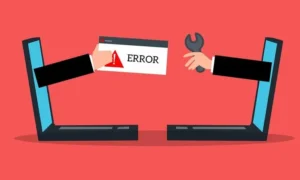Discover the imaginary easy:7nbbaotekl8= drawings
easy:7nbbaotekl8= drawings Drawing is a wonderful way to express creativity, relax, and improve artistic skills. Whether you’re a beginner or an experienced artist, exploring new drawing ideas can inspire you and take your artwork to the next level. This article will cover a range of drawing ideas, techniques, and tips suitable for all skill levels. easy:7nbbaotekl8= drawings
Introduction to easy:7nbbaotekl8= drawings
Drawing is more than just putting pen to paper; it’s a means of communication, expression, and exploration. Whether you’re sketching casually or creating detailed illustrations, the act of drawing has numerous benefits and can be incredibly fulfilling.
Benefits of Drawing
Drawing offers several advantages, including:
- Enhances Creativity: It stimulates the imagination and helps in generating new ideas.
- Improves Hand-Eye Coordination: Drawing requires precision and control, which develops motor skills.
- Reduces Stress: Engaging in creative activities like drawing can be a form of meditation and stress relief.
- Increases Observation Skills: It trains you to notice details and perceive the world in new ways.
Materials Needed for Drawing
To start drawing, you’ll need a few basic supplies:
- Pencils: A range of pencils from HB to 6B for different shading effects.
- Paper: Good quality drawing paper to withstand erasing and shading.
- Erasers: A kneaded eraser and a standard eraser for corrections.
- Sharpener: To keep your pencils sharp.
- Optional Supplies: Colored pencils, markers, and charcoal for added effects.
Drawing Basics for Beginners
Starting with the basics is crucial for building a strong foundation in drawing. Here are some fundamental techniques:
Understanding Shapes and Forms
Learning to break down complex objects into simple shapes is key. Practice drawing basic shapes like circles, squares, and triangles, and then combine them to form more complex structures.
Basic Shading Techniques
Shading adds depth and realism to your drawings. Start with these techniques:
- Hatching: Drawing closely spaced parallel lines.
- Cross-Hatching: Drawing intersecting sets of parallel lines.
- Blending: Using a blending stump or finger to smooth out pencil lines.
Simple Line Drawings
Line drawings focus on the outline of objects without shading. This technique helps in understanding proportions and the overall structure of subjects.
Intermediate Drawing Techniques
Once you’ve mastered the basics, you can move on to more advanced techniques to add depth and dimension to your drawings.
Adding Depth with Perspective
Understanding perspective is essential for creating realistic drawings. Start with one-point perspective and gradually move to two-point and three-point perspectives.
Blending and Layering
Blending different shades and layering colors can create rich textures and depth. Use blending tools and experiment with different pencil pressures for varied effects.
Texture Creation
Textures can bring your drawings to life. Practice creating textures like fur, wood, and fabric using different strokes and shading techniques.
Advanced Drawing Ideas
For those looking to challenge themselves further, advanced drawing topics offer a great way to refine and showcase your skills.
Dynamic Poses and Movement
Drawing figures in motion adds dynamism to your artwork. Study anatomy and practice quick gesture drawings to capture the essence of movement.
Realistic Portraits
Creating realistic portraits requires attention to detail and understanding facial proportions. Practice sketching individual features like eyes, noses, and mouths before attempting full portraits.
Complex Landscapes
Landscapes involve multiple elements and require a good grasp of perspective, composition, and lighting. Start with simple scenes and gradually incorporate more details.
Drawing Inspiration
Finding inspiration can sometimes be challenging. Here are some sources to ignite your creativity:
Nature and Landscapes
Nature provides endless inspiration with its variety of forms, colors, and textures. Try sketching plants, trees, mountains, and water bodies.
Still Life and Everyday Objects
Everyday objects can be fascinating subjects. Arrange a still life setup with items around your home and practice capturing their shapes and shadows.
Abstract and Surreal Art
Abstract and surreal art allow for limitless creativity. Experiment with different styles and techniques to express your unique artistic vision.
Digital Drawing
With the advent of technology, digital drawing has become increasingly popular. Here’s what you need to know:
Tools for Digital Drawing
Essential tools include:
- Graphics Tablet: Provides precision and control similar to traditional drawing.
- Stylus: For drawing directly on the tablet.
- Software: Programs like Adobe Photoshop, Corel Painter, and Procreate.
Digital vs. Traditional Drawing
Both have their pros and cons. Digital drawing offers convenience and a wide range of tools, while traditional drawing provides a tactile experience and simplicity.
Popular Software for Digital Art
Several software options cater to different needs:
- Adobe Photoshop: Versatile with many features for drawing and painting.
- Corel Painter: Known for its realistic brush simulations.
- Procreate: Popular among iPad users for its intuitive interface and robust features.
Drawing Exercises and Practice
Consistent practice is the key to improving your drawing skills. Here are some exercises:
Daily Drawing Challenges
Set a goal to draw something every day. This could be anything from a quick sketch to a detailed drawing.
Copying the Masters
Study and replicate the works of master artists. This helps in understanding their techniques and improving your own skills.
Creative Prompts
Use creative prompts to push your boundaries. These could be single words, themes, or specific challenges like drawing with your non-dominant hand.
Tips for Improving Your Drawing Skills
Enhancing your drawing skills involves continuous learning and practice. Here are some tips:
Joining Art Communities
Becoming part of an art community provides support, feedback, and inspiration. Join online forums, local art groups, or social media communities.
Taking Art Classes
Formal instruction can significantly improve your skills. Look for local art classes or online courses that fit your schedule and interests.
Using References Effectively
References are invaluable for drawing. Use photos, real objects, and other artworks to study shapes, proportions, and details.
FAQs
How do I start drawing as a beginner?
Begin with basic shapes and forms. Practice consistently and gradually move on to more complex subjects.
What are the best drawing materials?
A good set of pencils, quality drawing paper, erasers, and sharpeners are essential. Optional materials include colored pencils, markers, and charcoal.
How can I improve my shading technique?
Practice different shading techniques like hatching, cross-hatching, and blending. Observe how light and shadow interact on objects.
Is digital drawing better than traditional drawing?
Both have their advantages. Digital drawing offers more tools and convenience, while traditional drawing provides a tactile experience and simplicity.
What are some easy drawing exercises?
Daily drawing challenges, copying master artworks, and using creative prompts are great ways to practice and improve.
How can I stay motivated to draw regularly?
Set achievable goals, join art communities, and keep exploring new subjects and techniques to stay inspired.
Conclusion
Drawing is a rewarding and enriching activity that anyone can enjoy. By exploring different techniques, practicing regularly, and seeking inspiration from various sources, you can continually improve your skills and create beautiful artwork. Embrace the journey of learning and let your creativity flow!














Post Comment